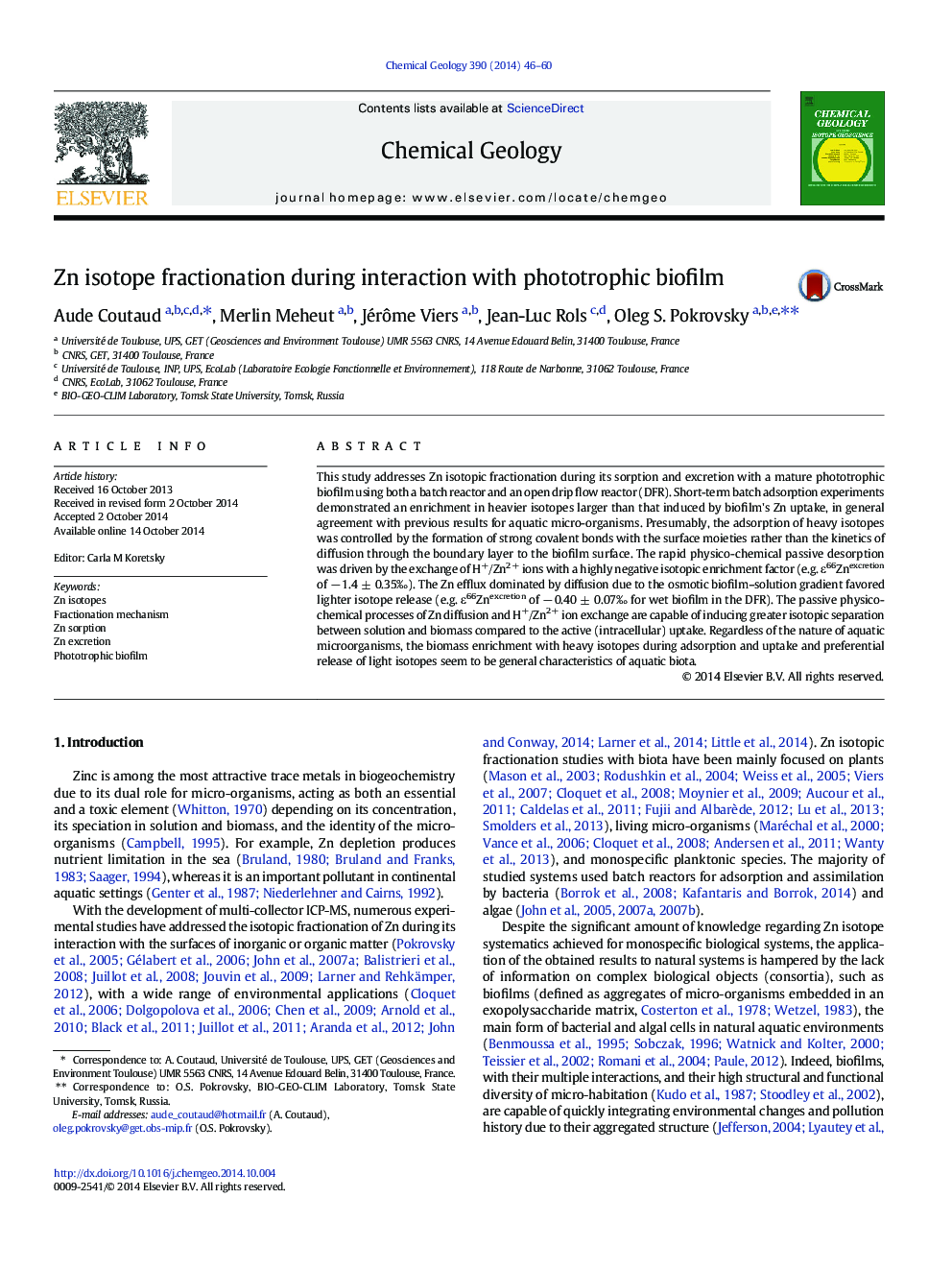| Article ID | Journal | Published Year | Pages | File Type |
|---|---|---|---|---|
| 6436463 | Chemical Geology | 2014 | 15 Pages |
â¢Zn sorption by phototrophic biofilm induced a heavy-isotope enrichment of biomass.â¢Light-isotope excretion occurred during passive surface desorption and active efflux.â¢Isotopic fractionation was greater for passive physico-chemical than biological processes.
This study addresses Zn isotopic fractionation during its sorption and excretion with a mature phototrophic biofilm using both a batch reactor and an open drip flow reactor (DFR). Short-term batch adsorption experiments demonstrated an enrichment in heavier isotopes larger than that induced by biofilm's Zn uptake, in general agreement with previous results for aquatic micro-organisms. Presumably, the adsorption of heavy isotopes was controlled by the formation of strong covalent bonds with the surface moieties rather than the kinetics of diffusion through the boundary layer to the biofilm surface. The rapid physico-chemical passive desorption was driven by the exchange of H+/Zn2 + ions with a highly negative isotopic enrichment factor (e.g. ε66Znexcretion of â 1.4 ± 0.35â°). The Zn efflux dominated by diffusion due to the osmotic biofilm-solution gradient favored lighter isotope release (e.g. ε66Znexcretion of â 0.40 ± 0.07â° for wet biofilm in the DFR). The passive physico-chemical processes of Zn diffusion and H+/Zn2 + ion exchange are capable of inducing greater isotopic separation between solution and biomass compared to the active (intracellular) uptake. Regardless of the nature of aquatic microorganisms, the biomass enrichment with heavy isotopes during adsorption and uptake and preferential release of light isotopes seem to be general characteristics of aquatic biota.
Graphical abstractDownload high-res image (254KB)Download full-size image
